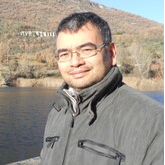Advances and Application of Electron Beam Dynamics
A special issue of Photonics (ISSN 2304-6732).
Deadline for manuscript submissions: closed (31 December 2021) | Viewed by 7885
Special Issue Editors
Interests: free-electron lasers; undulator magnets; coherent radiation sources; beam dynamics; particle physics; high energy physics; data analysis
Interests: particle sources; radiation sources; coherence and interference effects in radiation sources; polarization; particle physics
Interests: free-electron lasers; insertion devices; undulator magnets; coherent radiation sources; beam dynamics; laser optics
Special Issue Information
Dear Colleagues,
We are pleased to invite you to submit a manuscript to the Photonics Special Issue “Advances and Application of Electron Beam Dynamics”. Radiation sources based on electron beams play a well-established role in exploring and characterizing advanced materials, biomaterials, and living matter, with a diverse range of ground-breaking applications in industry, medicine, life science, fundamental research, and cultural heritage. For example, synchrotron radiation and free-electron laser facilities have allowed broadening the region of the electromagnetic spectrum accessible to precision investigation, extending from terahertz wave frequencies to Hard X-ray photons. Moreover, the new generation of Synchrotron light sources has enabled us to reach emittance levels capable of providing fully diffraction-limited X-ray sources. At the same time, the impressive recent development in high power laser systems and optical cavities has recently boosted the Compton backscattering sources field, allowing to reach the very hard X-rays and Gamma-ray domains with compact facilities at reduced costs.
Furthermore, electron beam light sources are going through an extraordinary phase of development and innovation in terms of brightness, acceleration gradient, and low electron bunch emittance. In particular, novel acceleration schemes based on laser, plasma or dielectric fields promise a dramatic reduction in size of future facilities. At the same time, advanced concepts of bright electron injectors and high gradient radiofrequency cavities are driving the design toward more compact and cost-effective facilities. These achievements also open the way for a new generation of “exotic” radiation sources based, respectively, on channeling, coherent bremsstrahlung, parametric x-rays, and Smith–Purcell effects.
This Special Issue plans to offer a wide up-to-date review on recent progress within the field of electron-based photon sources encompassing the most recent results at running facilities, experimental beam techniques, beam optics instruments, advanced theoretical concepts, diagnostic tools, novel beam configurations, coherence enhancement methods, and upgrade status of present user facilities.
Dr. Federico NguyenProf. Dr. Alessandro Variola
Dr. Alberto Petralia
Guest Editors
Manuscript Submission Information
Manuscripts should be submitted online at www.mdpi.com by registering and logging in to this website. Once you are registered, click here to go to the submission form. Manuscripts can be submitted until the deadline. All submissions that pass pre-check are peer-reviewed. Accepted papers will be published continuously in the journal (as soon as accepted) and will be listed together on the special issue website. Research articles, review articles as well as short communications are invited. For planned papers, a title and short abstract (about 100 words) can be sent to the Editorial Office for announcement on this website.
Submitted manuscripts should not have been published previously, nor be under consideration for publication elsewhere (except conference proceedings papers). All manuscripts are thoroughly refereed through a single-blind peer-review process. A guide for authors and other relevant information for submission of manuscripts is available on the Instructions for Authors page. Photonics is an international peer-reviewed open access monthly journal published by MDPI.
Please visit the Instructions for Authors page before submitting a manuscript. The Article Processing Charge (APC) for publication in this open access journal is 2400 CHF (Swiss Francs). Submitted papers should be well formatted and use good English. Authors may use MDPI's English editing service prior to publication or during author revisions.
Keywords
- synchrotron radiation
- free-electron laser
- beam diagnostics
- beam optics
- THz radiation
- channeling
- Compton sources
- diffraction limit
- X-ray sources
- novel acceleration schemes
- coherence effects
- beam brightness
- low emittance






